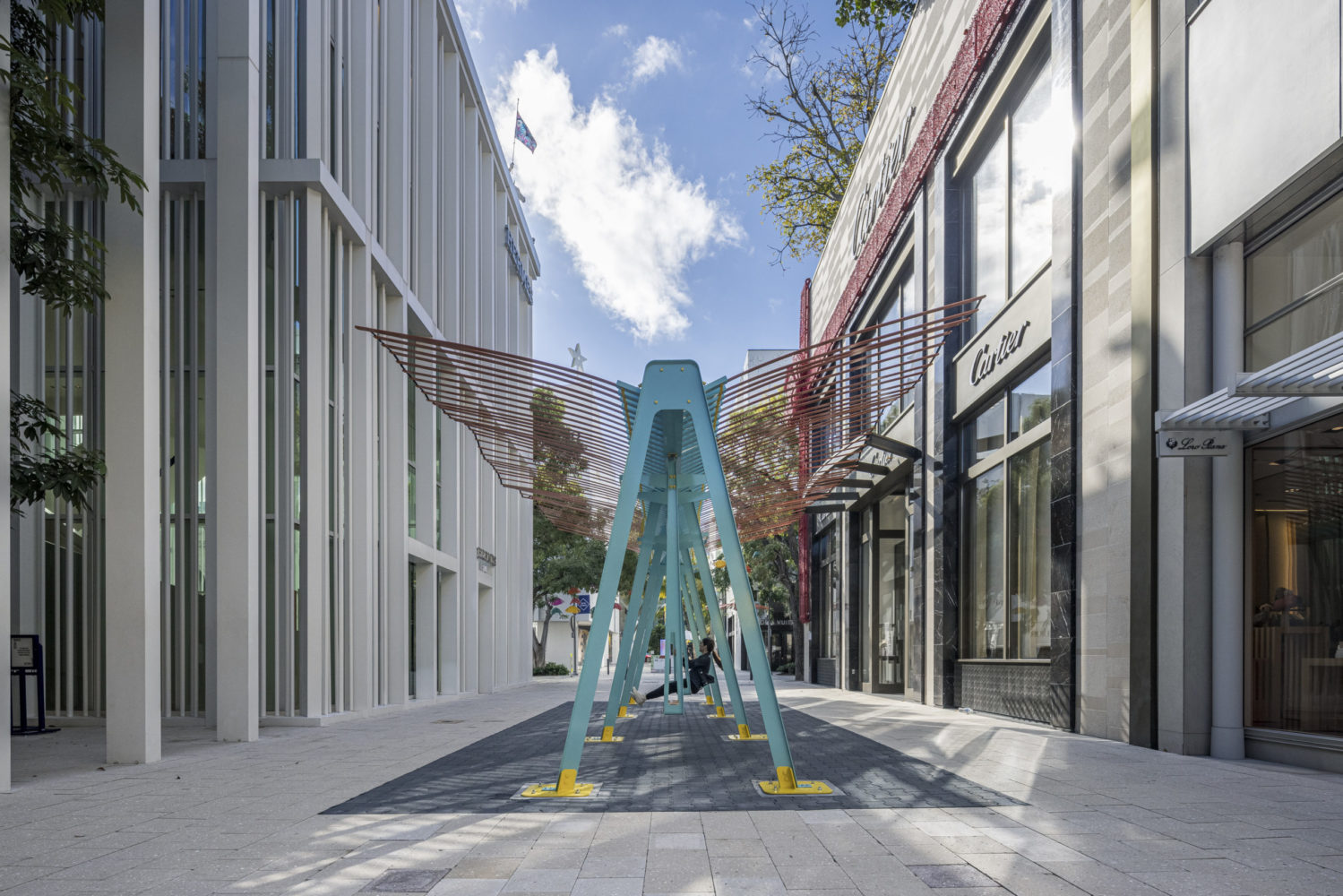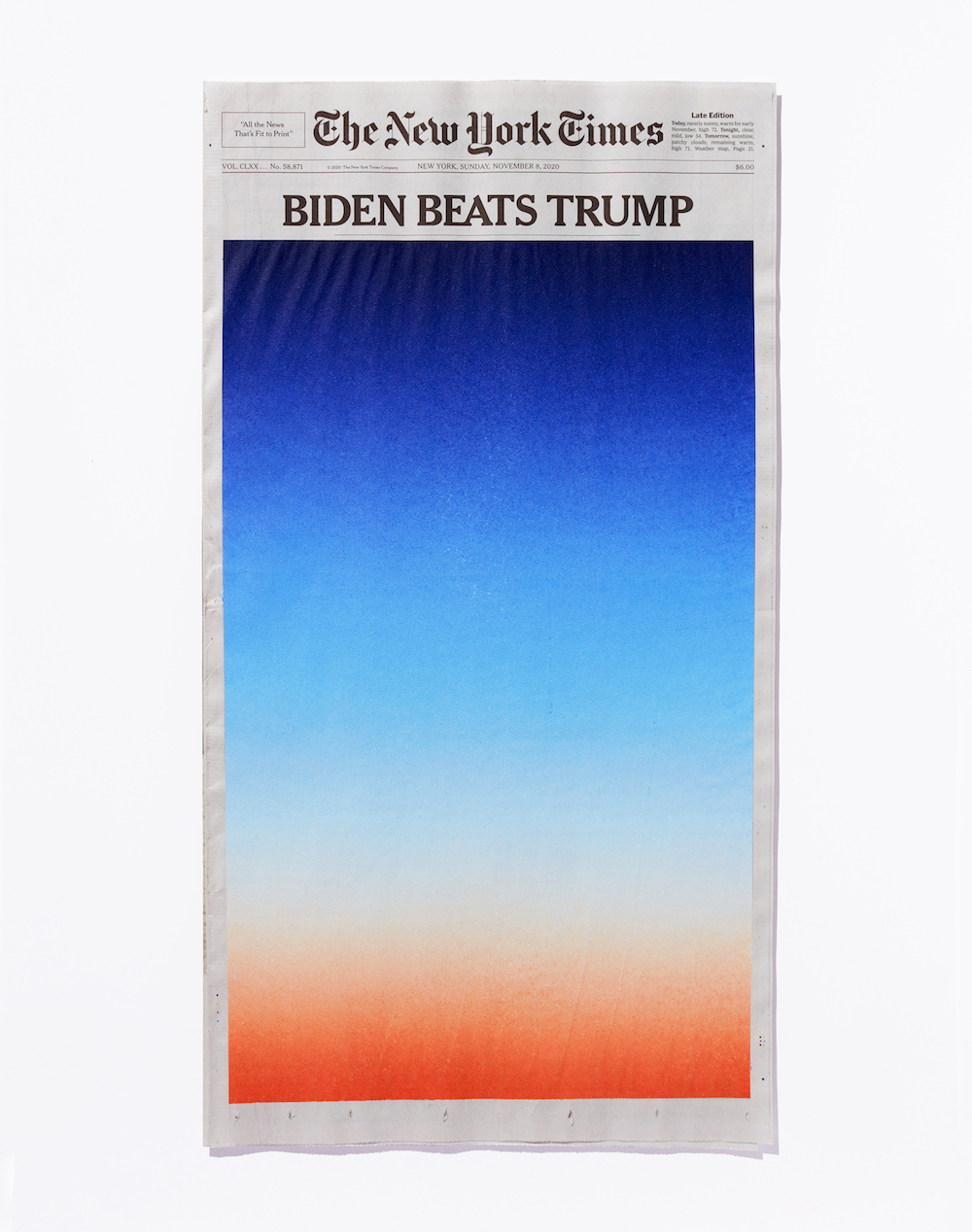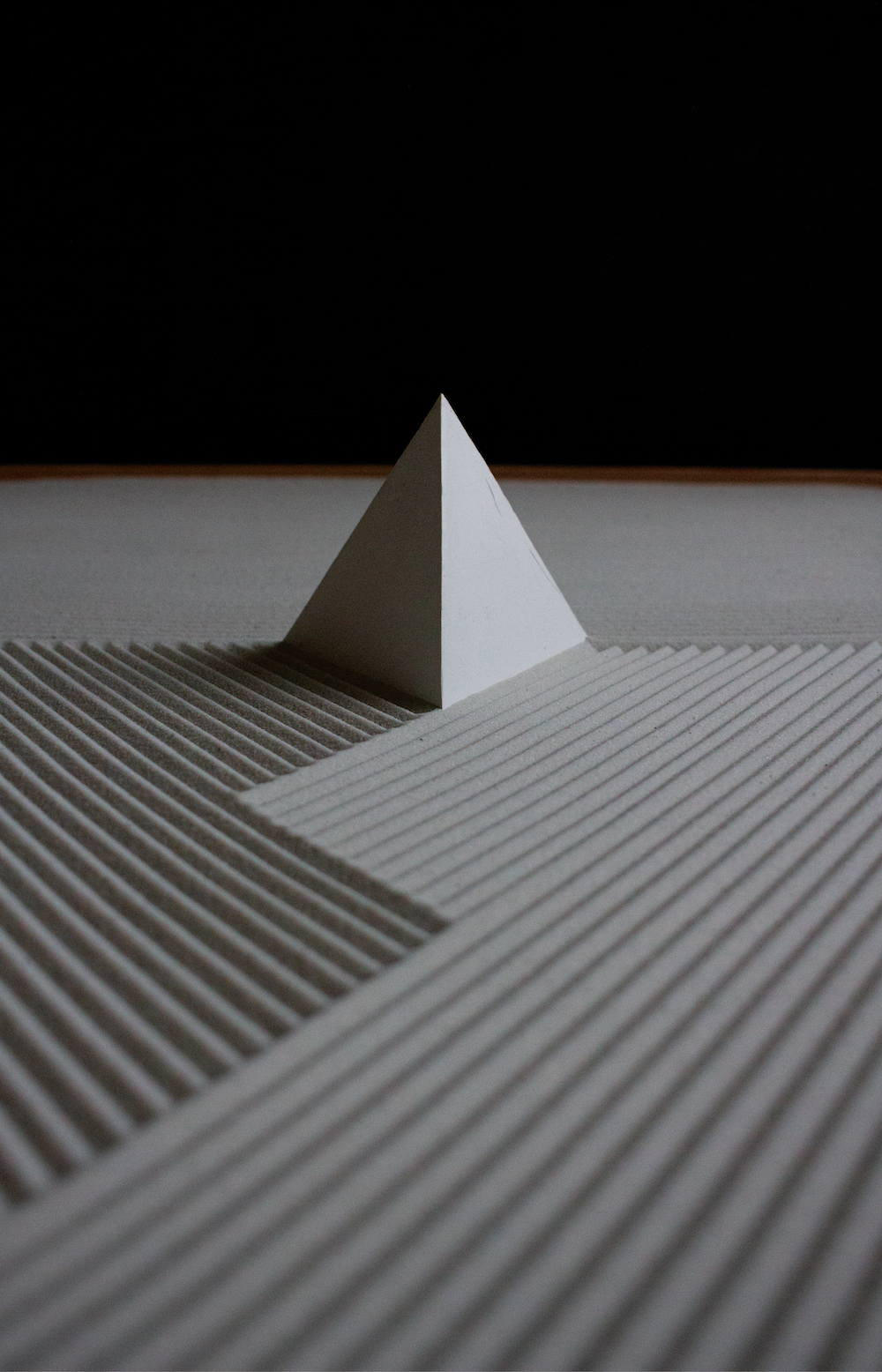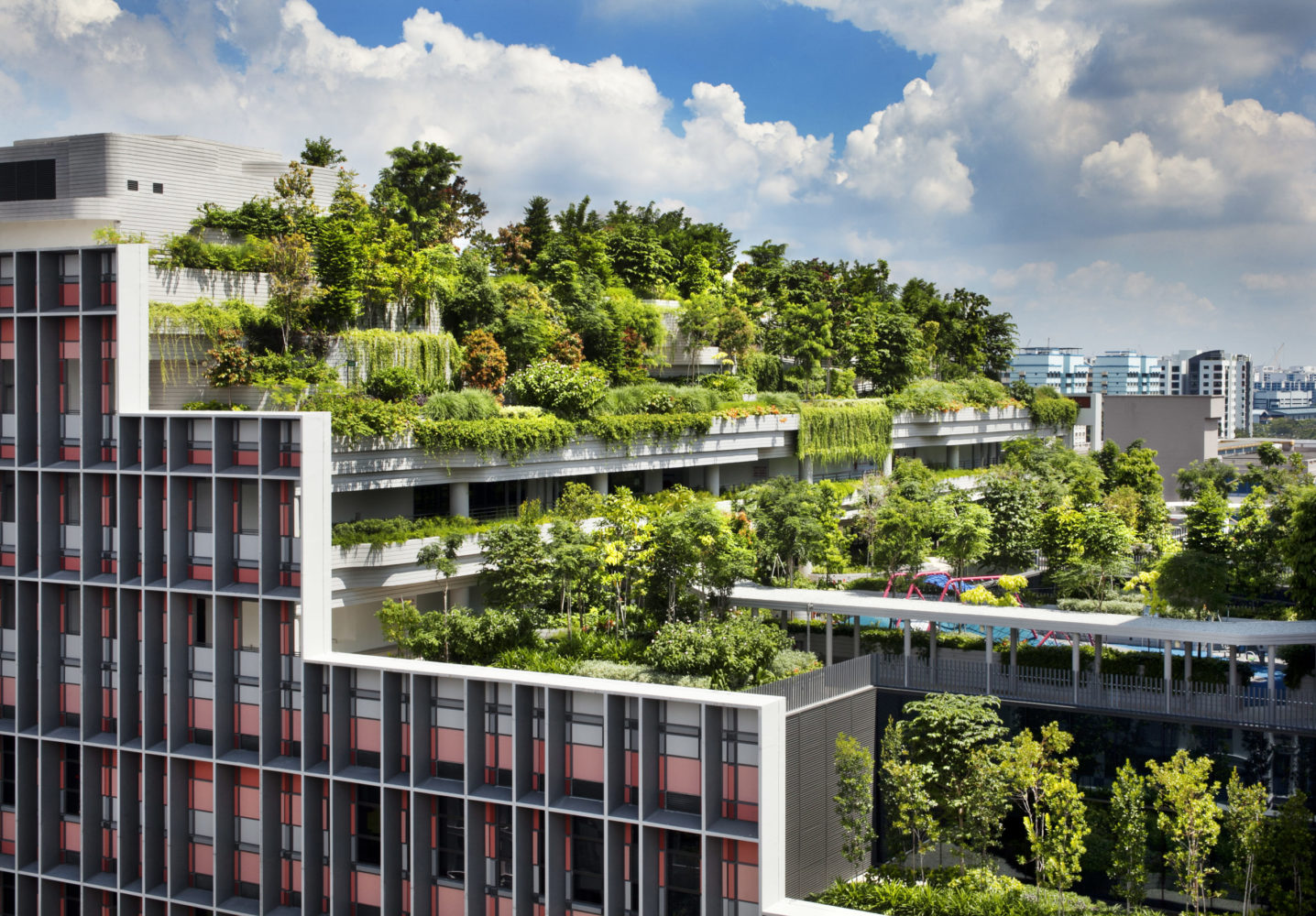Last December during Design Miami/, visitors to the Miami Design District encountered a return to childhood with a chance to play and reflect. There, in the middle of high-end shops and contemporary architecture, was a light-blue swing set, with socially distant seats, and undulating orange-red wings that waved in reaction to the back and forth of its user.
The temporary installation, Conscious Actions, was designed by gt2P (great things to People), the Chilean design collective made up of Guillermo Parada, Tamara Pérez, Sebastián Rozas, Victor Imperiale, and Eduardo Arancibia. The Santiago studio, represented by Friedman Benda and founded in 2009, embraces experimentation and digital innovations, as well as new and old techniques. They use parametric design while incorporating local materials—even lava—and traditions.
Whitewall spoke with Parada about gt2P’s recent slate of public projects that truly bring great things to many, not just some.
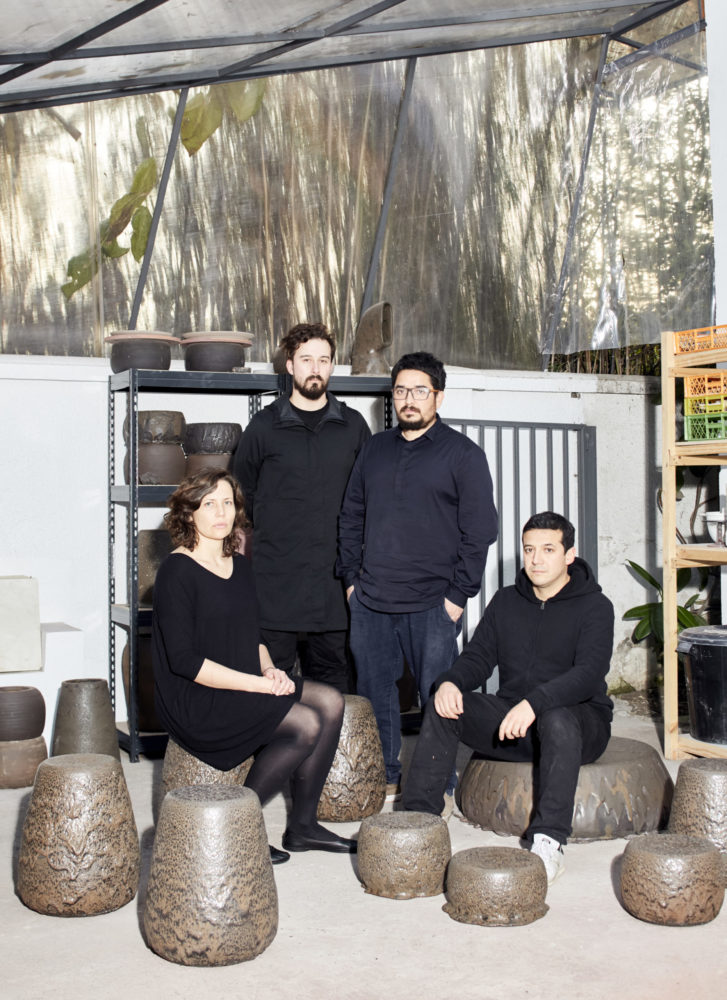
Photo © Cristobal Palma.
WHITEWALL: What was the prompt for Conscious Actions, winner of Miami Design District’s annual Design Commission?
GUILLERMO PARADA: It was a contest from curatorial team Wava Carpenter and Anna Carnick of Anava Projects. We received a specific brief related with the energy we consume and the energy we give back. We thought, “What is the fastest way for you to learn something?” When you are a kid, it is the most sponge-like time for you to learn new ideas.
WW: Right, we learn through play.
GP: Exactly. We think through play, we can learn. We started thinking of iconic childhood pieces, activated through physical or natural forces. With the swing, when the user generates energy through forces they are rewarded with reactive shadows, transformed surfaces, kinetic motions. We connected the system to make it reactive, and invited some friends to make it more social—while distanced.
With this project we are trying to prove if you send positive messages, you can also change your mind. We wanted to make the visitors kids again. In public space, if you take a positive approach, you can reach a wider audience. It creates an experience to give you an idea.
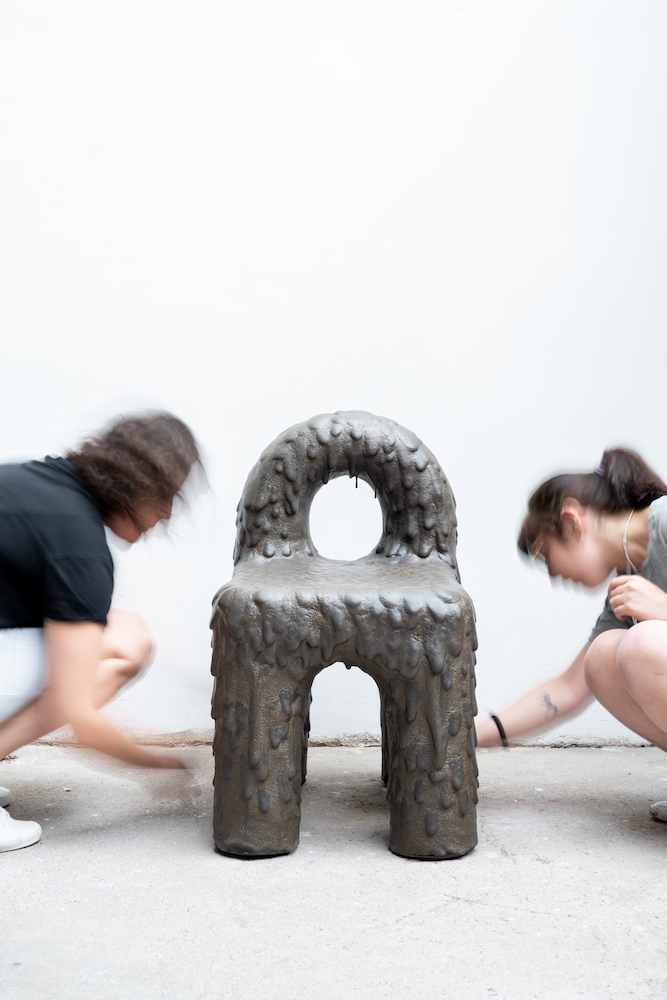
gt2P (Great Things to People), Remolten N1: Monolita Low Chair 15, Mahuanco, Osorno Volcano, January 31st, 2020, stoneware structure, volcanic lava, 27.5 x 23.75 x 25.5 inches, courtesy of Friedman Benda and gt2P.
WW: How did this kind of public project open up ideas for what you want to do next with the studio?
GP: This opened a big opportunity to be part of the public space. We can finally say we are doing great things to people. It’s a way to reach a wider audience.
It was so rewarding. You can prove that the message was direct. One of our goals was in the middle of this depression around the world with the pandemic, we can give people a little break of joy.
WW: You’re also working on another public project, the Suple Giant Catcher in Bicentenario Park in Santiago. What will that look like?
GP: It’s a huge park, and the commission was to do a bench there. So how can we do something that is relevant to the park but in a small intervention? We started thinking of Gulliver’s Travels, when the people of that town catch this giant. The giant of the park was the geography. We wanted to integrate to the park through our bench. We created two benches, one for kids and one for adults. Then we create this big window. When you approach the bench, you frame the giant of the park—the view. You can catch memories, too, framing an image of your son reading a book, a couple having a romantic moment, simply creating a picnic space for Sundays. It’s a micro urban activator. It allows you to catch your environment, create a little space.
WW: What materials will it be made from?
GP: We are going to make it in concrete, and we can color it with earth from the valley. The black parts we are going to dye with volcanic lava. We love to work with local materials. Even for the swing in Miami, we used the palette color of the Miami Art Deco district. We love to work with the context because it makes it easy for the people to understand the piece, and it’s practical. There are elements you can find directly there to build it. I love the expression of the local things in a local context.
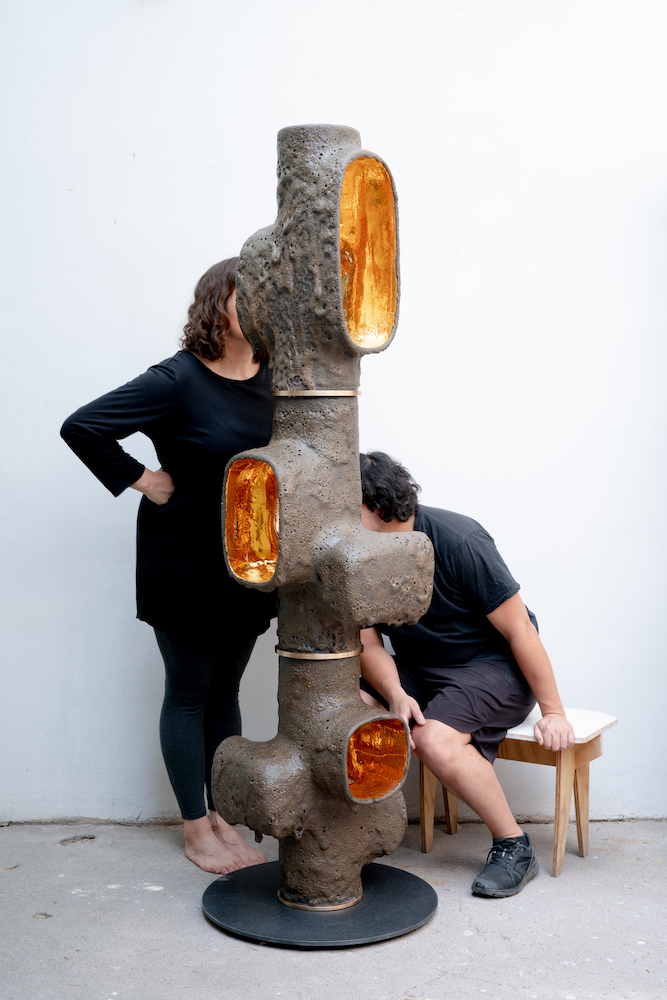
Courtesy of gt2P.
WW: Recently, you said that the past year with the lockdown helped make you rethink the environment you are in, and also look out for your community in new ways. What are some of the ways you are looking at your community?
GP: Part of the new way is related to seeing people interacting with our public pieces. That make us think that we definitely have to go ahead with these kinds of projects.
And the other is related to the project we called Losing My America presented at MAD museum in 2014. We started questioning the digital production processes looking at our territory, and we discovered many artisans that make great things with their hands, and where the technique they’ve created has built a community.
This project is the basis for Made by Chile. The idea was, “Let’s use that knowledge with new techniques to create centers in the communities in order to amplify their business model and integrate them into the global market.” The center would have a place for artisans to teach their technique, a place to work on collaborative new technologies, and promote so that new generations get integrated into the old process.
We’ve tried to do it for two years to raise funds. There is very conservative thinking about craft that you have to preserve the icons, more than the technique. In Chile, it’s a very resisted idea, because the institutions that manage the craft want to keep everything as it was a hundred years ago. But that preserves the circle of poverty as well. We think that the thing you have to keep is not the icons, it’s the community that the technique created around the town.
It’s a dream to make these centers. We want them to trigger businesses related to the technique, like a hotel in the town because many of these communities are outside of big cities. It is something we have to do and situations like COVID make us think that this is really possible because they can be connected through Internet or connected through these centers. This project is a big trigger for our studio in terms of things we want to create in the future.
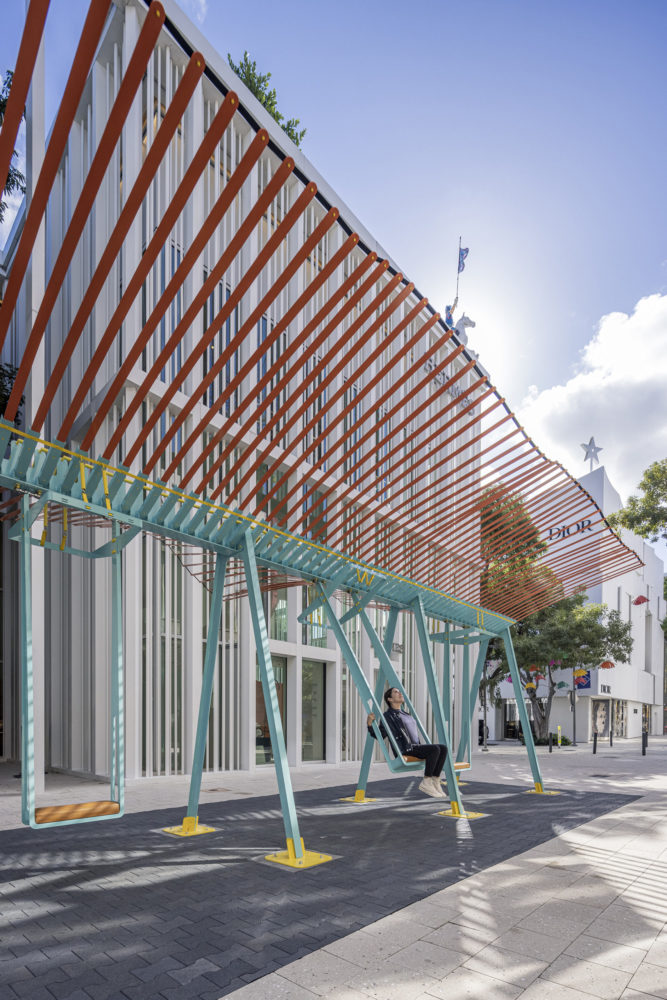
gt2P (Great Things to People), Conscious Action, 2020, photo by Kris Tamburello, courtesy of Friedman Benda and gt2P.



